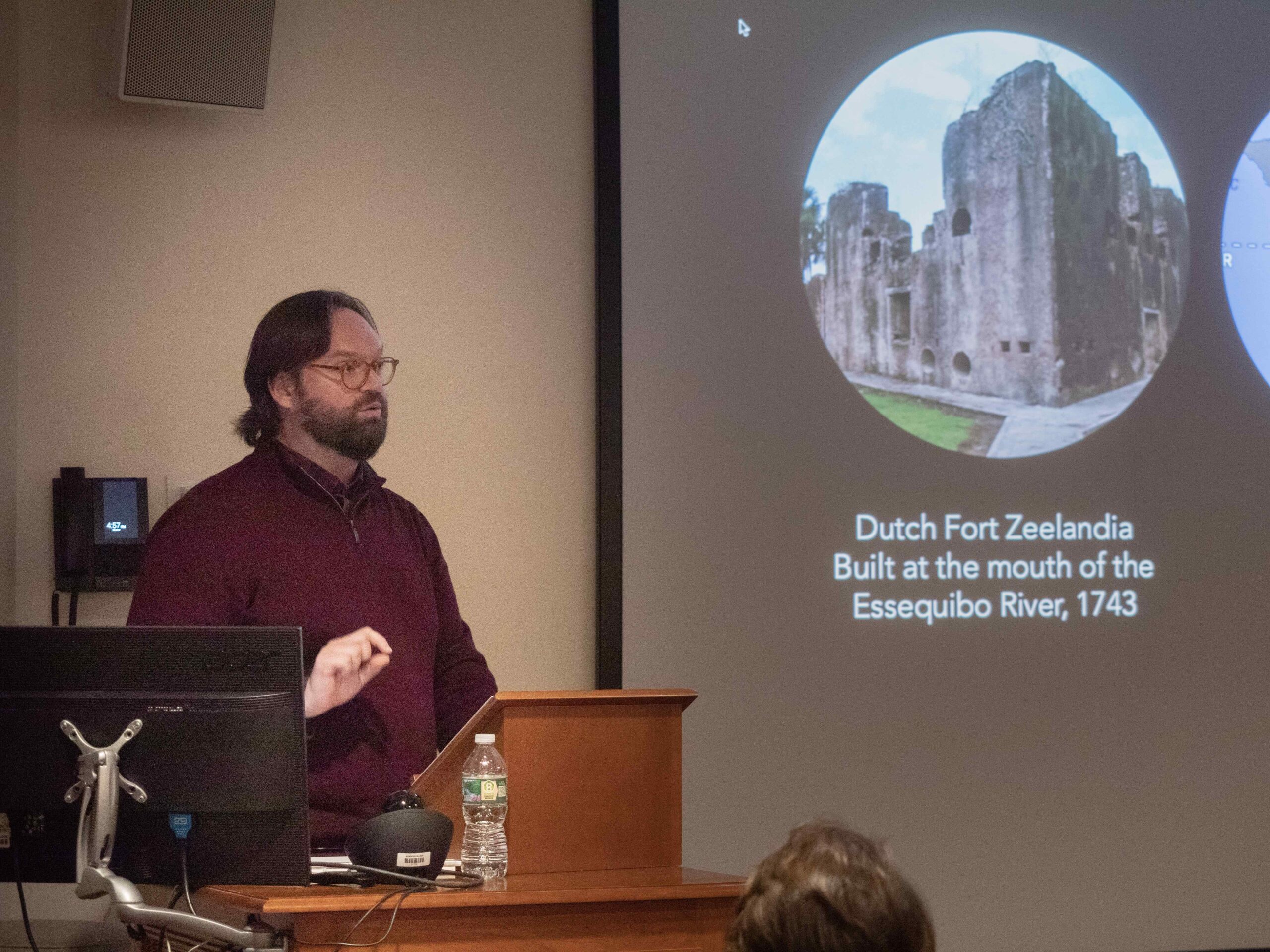It’s brick outside: Sam Dodd’s take on the American building block
October 28, 2022
 Alex Spear
Alex SpearWhat is the fabric of our society, a tool of imperialism and a decades-long research topic? According to Director of Ohio Valley Center for Collaborative Arts and Assistant Professor of Instruction and Art History Sam Dodd, it’s a brick.
In his architectural history talk entitled “The Brick that Sleeps Under Pavement,” hosted by Visiting Assistant Professor of Art Audrey Shakespear and supported by the Blythe Bickel Edwards fund, Dodd explored the American and social history of the building material that shares its name with the first year dorms on campus.
Dodd presented work and research from his current book project, which looks at the history of American construction through the lens of the brick and brick making. Through theoretical and methodological focuses in American architecture, he lifts the layers of cement off of the brick and delves into its place in American architectural and social history.
Dodd began his talk by breaking down the integral piece in modern life that bricks hold, while maintaining their human-made nature.
“Bricks are about as natural as books, highways and Betty Crocker. Bricks exist strictly within the human built world,” Dodd said. “The brick resists nature in that it persists. It must be pulverized in order to return to a kind of nature.”
Dodd then outlined the various roles the brick has maintained since its creation.
“The brick is a cache of material knowledge, a form of social-relational care and a site for both applied and speculative invention,” he said. “The brick affords the possibility of several futures by way of several pasts. It’s premodern and yet much modernity consists of it.”
Human interaction with bricks, Dodd explained, includes hard work such as mining, molding, transporting and handling, as well as the social contexts that surround this work.
Phillip Spyrou ’25 attended the talk and was fascinated by Dodd’s examination of brick’s prevalence in our lives.
“I thought it was really interesting … we’re about to walk on brick but I haven’t ever really thought about [brick’s] impact … or how many things are contained within a brick,” Spyrou said.
Carl Williams ’23 was also fascinated by Dodd’s knowledge of bricks and their impact on society.
“I feel like I know a lot more about bricks now, which is an improvement on the life I was living before,” Williams said.
Dodd broke down the brink into three categories: the museum brick, the future brick and the riverbed brick. Through the example of the museum brick, Dodd attempted to answer the question: “Who did the work in building America’s infrastructure?”
Dodd’s second approach to the history of the brick situated it in the context of colonization. After highlighting how the brick was advertised as a less perishable, more safe and more durable substitute to wood as a building material, Dodd discussed its biopolitical relevance in imperialism.
“In the year 1970 we have a post colonial nation Guyana, the US and China all handling the brick as an asset of cold war regime building,” Dodd said. “The brick signifies a permanent structure but not necessarily a sustainable one.”
The third and final framework he used to describe the transiency of the building material.
“The brick that I pulled out of the riverbed shows that bricks do not stay put,” Dodd said.
Bricks, Dodd says, are intertwined with politics, society, art and even poetry.
A resident of the midwest, Dodd also discussed the relevance of his work to the infrastructure of his home state.
“What are we gonna do with all of these old brick warehouses? They can’t all become breweries and yoga studios,” he said.
Despite his hearth of knowledge on the brick, Dodd maintains that bricks are no longer the best building material. When asked if he would like to make a brick on his own one day, Dodd said he would make one but he wouldn’t fire it, so as to not contribute to the creation of more bricks.
Dodd ended his talk reciting the quote he opened with by Louis Kahn.
“‘I hold the brick in my hand and the brick says to me listen.’ Thank you all for listening,” he said.

Comments
Before submitting a comment, please review our comment policy. Some key points from the policy: